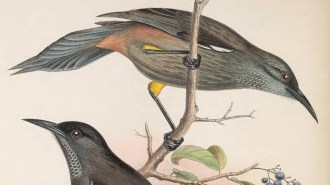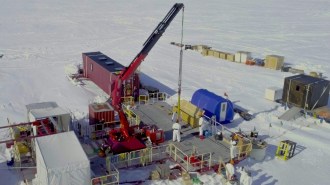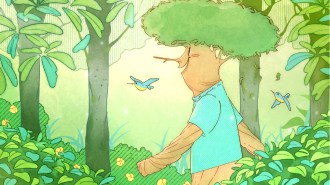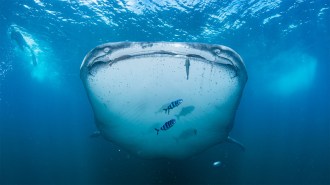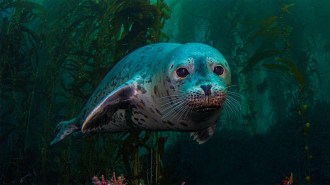Risky High Life: Mountain creatures prove extra-vulnerable
Climate change may literally knock the top off the world’s terrestrial-animal populations, according to an Australian analysis.

The species that have specialized in living at the heights of a particular mountain and occur nowhere else face unusually dire risks from climate change, says Stephen E. Williams of James Cook University in Townsville.
In a case study of such endemic vertebrates in a strip of mountainous rain forest in Queensland, just 1C of climate warming will deprive them of 65 percent of their core habitat, on average, Williams and his colleagues predict in an upcoming Proceedings of the Royal Society of London B. And with a rise of 3.5C, which Williams calls a “moderate” scenario, the analysis shows a complete loss of core habitat for 30 of the 65 endemic vertebrates in these rain forests.
“I don’t think any other studies have predicted such a catastrophic effect,” says Williams. “I’ve never written a paper I hope so fervently is wrong.”
Another modeler of climate effects agrees that concern is justified. Chris D. Thomas of the University of Leeds in England says, “When you look at all the species, it becomes a very convincing pattern.”
Most other studies of climate change in ecosystems have predicted major shifting of animal ranges with species losses only here and there, says Williams. A 1999 study, however, shows that on a Costa Rican mountain, lowland bird species moved upland in the face of climate change, while upper-altitude amphibians dwindled.
“I didn’t start out to study climate change,” Williams says. For 10 years or so, he and his various colleagues examined habitat use by surveying birds, mammals, and other vertebrates of a region that Australians designate as the wet tropics.
When the researchers modeled how about a dozen of the species’ ranges would change with temperature rise, the dramatic results made Williams focus on climate change.
For the new study, he considered the region’s 65 endemic rain forest species, including ringtail possums, the golden bowerbird, and microhylid frogs, which skip the tadpole stage.
The most conservative climate change that the team considered, a 1C rise, “might not send a lot of species extinct but would make them critically endangered,” Williams says. With a 5C rise, “there’s pretty much no range left of anything among the endemics,” says Williams.
According to the United Nations’ Intergovernmental Panel on Climate Change, the most likely scenario for the next century is a 1.4C to 5.8C rise.
Jane Hill of York University in England welcomes the new study as “important in highlighting the scale of the loss with relatively small temperature changes.”
Both Williams and Thomas caution that fates of particular species will differ from the overall results of the model described in the Australian report.
However, Thomas says, “I think this will be a very influential paper.”
Williams says that international cooperation to reduce greenhouse gases is necessary for the strongest protection of mountain ecosystems. Yet keeping an ecosystem in the best health possible, by maintaining its biodiversity, would cushion the insults of climate change. “That’s something that can be done locally,” he says.
****************
If you have a comment on this article that you would like considered for publication in Science News, send it to editors@sciencenews.org. Please include your name and location.

